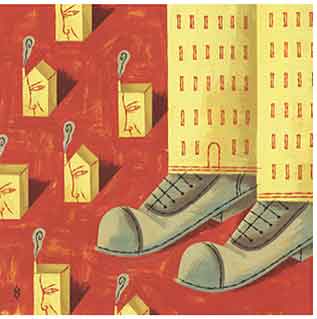Oct 01, 2004When Symbol Technologies announced on July 27 that it planned to purchase Matrics, a developer of Class 0 EPC technology, it immediately raised speculation about a wave of consolidation within the RFID industry. So far, that hasn’t happened, but there are reasons to believe that we will see more deals in 2005 and that this will be good for end users.
The RFID industry is fragmented, both in tag production and in the infrastructure end users need to derive business value from the technology. Today, Texas Instruments and EM Microelectronics are among the few RFID tag providers that make RFID microchips, attach antennas and produce finished inlays. In most cases, semiconductor companies produce microchips, which they sell to a company that attaches the antenna and mounts the antenna and chip onto a substrate to create an inlay. The company can add an adhesive layer to create a tag, but the inlay is often sold to a company that places it between a layer with adhesive and a paper label.
At each step in the production process, a company tacks on some margin for its own profit, which drives up the price of finished labels. If a semiconductor company were to purchase a firm that makes inlays, it would make tag production more efficient and eventually reduce the overall cost of RFID tags and labels. Alien Technology, SmartCode and other startups that have developed technology for mass-assembling RFID tags are potential takeover targets. Philips Semiconductors has invested in Alien and is a potential acquirer. Companies that have developed low-cost ways to mass-produce cheap antennas might also be targets for chip makers (see Possible Acquisition Targets).
End users would also benefit from having large electronics manufacturers, such as Hitachi, Samsung and perhaps even Dell, enter the market for RFID readers. Right now, most companies that sell RFID readers are fairly small and don’t have any expertise in mass-producing readers. A large manufacturer that could make hundreds of thousands of low-cost readers annually would facilitate adoption by reducing the price and improving the availability of readers.
A big electronics manufacturer might purchase a reader company in an effort to get into the RFID business quickly. A company such as Dell, with its ability to produce high-quality commodity electronics at a low price, would seem to be a good candidate to manufacture RFID fixed readers in mass quantities. It doesn’t have any expertise in RF engineering, but that would come with the acquisition of an RFID reader company.
In the near term, end users would benefit most from consolidation among companies that provide pieces of an RFID system, such as network infrastructure, middleware and enterprise applications. Today, end users might have to go to separate companies to purchase RFID tags, readers, middleware and enterprise applications that can handle unique serial numbers, and they might need yet another company to integrate the whole system. Consolidation that brings more elements of a total package together will enable end users to deal with fewer vendors.
Symbol has a data capture infrastructure that includes wireless LANs and software for managing data from bar code scanners. By integrating Matrics’ RFID products into this infrastructure, Symbol can offer its customers a fully integrated data capture infrastructure and the services staff needed to deploy it. Symbol’s current clients would need only to integrate this infrastructure with back-end systems upgraded to handle RFID data.
There were rumors that IBM was also seeking to acquire Matrics. IBM has the manufacturing skill to mass-produce readers, can provide the necessary middleware and has the ability to do systems integration. That would make it a formidable player in the market for large RFID installations.
Enterprise application vendors might seek to purchase an RFID middleware company in an attempt to jump-start their RFID efforts. Several enterprise resource planning software providers, including SAP and Manhattan Associates, have developed their own middleware. But others, such as i2 Technologies, PeopleSoft and Manugistics, could leap to the fore with the acquisition of GlobeRanger or OATSystems, middleware companies that count many early adopters among their clients.
It’s likely that most of the near-term consolidation will be around systems integration and services. There are no companies today that have experience installing large numbers of RFID readers and integrating them with back-end systems. Wal-Mart has always been a go-it-alone organization and might choose to train its own staff to deploy readers. But many other large companies would like to turn to one company to deploy their readers.
As Global 1000 companies begin to roll out RFID systems beginning late this year, it’s likely that systems integrators will find they don’t have enough engineers with RFID experience. They will likely buy up smaller competitors to fill the void quickly. End users might benefit from being able to deal with one system integrator, but they will also have to be careful to ensure that the company they choose has acquired skilled staff and not just warm bodies.

